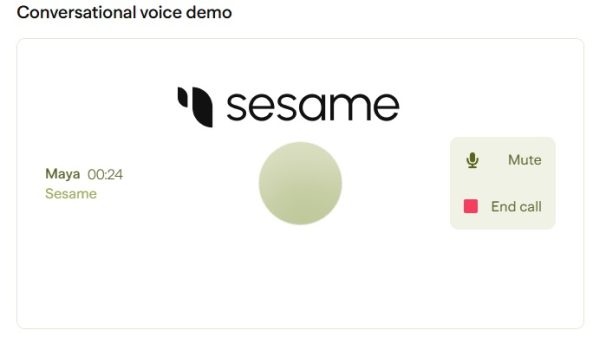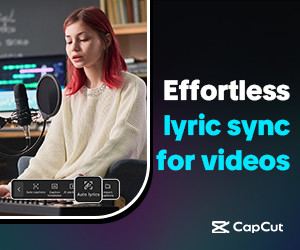 Pin
Pin So, what is Sesame AI and why is everyone suddenly talking about it? In simple terms, it’s a next-gen AI platform that mixes voice, intelligence, and conversation in a way that feels less like a machine and more like a real person. Unlike the usual back-and-forth with other AI tools, Sesame AI actually gets what you’re aiming for—and does it with style.
It’s already getting attention for its insane voice capabilities and surprisingly human responses. If ChatGPT is like texting with a smart assistant, Sesame AI feels like you’re talking to a friend who remembers your tone, mood, and even what you said five minutes ago. That context awareness makes a huge difference, especially for content creators and businesses who want things to sound natural.
It’s not just a gimmick. Sesame AI brings smoother flow, better memory, and real emotion to AI conversations—and that’s what makes people stick around.
Table of Contents
What Makes Sesame AI Different from ChatGPT, Grok, and ElevenLabs?
When comparing Sesame AI to ChatGPT, Grok, and ElevenLabs, several distinct features set it apart. While ChatGPT is known for its text-based interactions and Grok for its integration with X (formerly Twitter) and a touch of humor, Sesame AI focuses on delivering a more natural and emotionally resonant conversational experience. Its emphasis on voice interaction and contextual understanding allows for more engaging and human-like conversations.
Grok, developed by xAI, offers advanced reasoning capabilities and integrates with social media platforms, providing users with real-time information and a unique conversational style. However, Sesame AI’s strength lies in its ability to adapt to user behavior and preferences, creating a more personalized experience. ElevenLabs specializes in voice synthesis, producing high-quality audio outputs, but it lacks the conversational depth and adaptability that Sesame AI provides.
In essence, Sesame AI combines the strengths of these platforms—ChatGPT’s conversational abilities, Grok’s real-time information access, and ElevenLabs’ voice synthesis—into a cohesive and user-friendly package. Its focus on creating emotionally intelligent interactions makes it a compelling choice for users seeking a more natural and engaging AI experience.
How Sesame AI Works Behind the Scenes
Sesame AI is powered by its Conversational Speech Model (CSM), a single-stage, multimodal transformer that integrates text and audio processing. This architecture enables real-time, emotionally intelligent conversations, allowing the AI to adapt its responses based on the user’s tone and context. The CSM achieves this through features like natural timing, pauses, and emphasis, creating a more human-like interaction.
A standout aspect of Sesame AI is its “voice presence”—the ability to engage in dialogue that feels genuine and builds trust over time. This is achieved by maintaining a consistent personality, adjusting tone and style to match the situation, and responding with appropriate emotional cues. The AI’s design focuses on creating a conversational partner that doesn’t just process requests but engages in meaningful dialogue.
Sesame AI’s low-latency generation (approximately 200ms) ensures smooth, real-time interactions. Its ability to handle conversational dynamics, such as knowing when to pause or emphasize certain words, further enhances the natural flow of conversation. These technical innovations collectively contribute to an AI experience that feels less like interacting with a machine and more like conversing with a human.
Where Sesame AI Shines: Real-Life Use Cases
Sesame AI isn’t just a tech demo—it’s already being used in the real world, and people are impressed. One major win? Voice-first content creation. Podcasters, YouTubers, and indie game developers are loving it because it can narrate scripts with emotion, timing, and flow that doesn’t feel robotic. It doesn’t just read the words—it performs them. That alone makes it stand out in a crowded space.
Another strong use case is customer service. Sesame AI can hold natural-sounding conversations with customers over voice channels. It picks up on emotional cues, doesn’t interrupt awkwardly, and actually sounds helpful. That’s a big shift from the usual robotic voice assistants that leave people frustrated.
Even in education and accessibility, Sesame AI is opening new doors. It can act like a tutor with a warm voice or help visually impaired users by reading content in a natural tone. The fact that it can switch styles and tones depending on the need makes it incredibly versatile.
Why People Are Saying It’s the “Next Big Thing”
A big reason Sesame AI is catching fire online is because it feels like the most human AI people have used so far. It’s not just about how smart it is—it’s about how it sounds. There’s something about the rhythm, the pauses, and even the slight imperfections that make its voice output feel real, not synthetic. That “realness” is what gets people hooked.
Another factor? Timing. People are tired of AI tools that feel cold or overly scripted. Sesame AI showed up just when creators, educators, and even businesses were begging for something more personal and less clunky. It’s been called a “ChatGPT killer” in some circles, not because it does more technically, but because it connects better emotionally.
Also, it helps that Sesame AI keeps improving. The team behind it is active, fast-moving, and already pushing open-source updates. That keeps developers and tech-savvy users excited. When an AI makes you feel something—especially when it’s just talking—that’s a game-changer.
Limitations and Things You Should Know
As impressive as Sesame AI is, it’s not perfect. Like any new tech, it still has a few growing pains. For starters, its emotional tone isn’t always spot-on. Sometimes it can sound too dramatic or not quite match the mood of what it’s reading. This isn’t a dealbreaker, but if you’re looking for ultra-precise emotional delivery every time, you might need to tweak your inputs or guide it a bit.
There’s also the fact that it’s still early-stage. That means bugs, occasional lag, and updates that might change how features work. It’s evolving quickly, but with that comes the usual ups and downs of being on the cutting edge. Some users report that the customization options aren’t as deep as they’d like yet—especially when it comes to fine-tuning personality or voice style.
Lastly, while it’s powerful, it might be overkill for basic needs. If you’re just looking for simple chatbot answers, you don’t really need something this advanced. It shines best when you need depth and tone.
Which AI Should You Use and When?
This really depends on what you’re trying to do. If your goal is fast, accurate text generation for articles, emails, or code, ChatGPT still leads the pack. It’s stable, reliable, and integrates easily into most workflows. For social media vibes or current event conversations, Grok is a solid pick—especially if you’re already active on X. And when it comes to super crisp, studio-quality voice generation, ElevenLabs has made a name for itself.
But here’s where Sesame AI changes the game—it brings all that together with emotion and interaction. If you want your AI to feel like it’s alive in a conversation, or you need high-quality voice delivery with tone that actually matches the mood, Sesame is the one to reach for. It’s especially useful for creators, educators, storytellers, and support agents.
In short:
- Text? Use ChatGPT.
- Social + news? Grok.
- Pure voice cloning? ElevenLabs.
- Interactive, emotional voice that feels real? That’s Sesame AI’s lane.
Final Thoughts — Is Sesame AI Worth It?
So, is Sesame AI worth the hype? If you care about how something sounds and feels when it speaks—then absolutely, yes. It’s not just another tool that spits out words. It brings personality, timing, and flow that can make even the most boring content feel alive. That’s something most AI tools just can’t do right now.
It’s especially a big win for storytellers, YouTubers, podcasters, or anyone who wants their content to have emotion without hiring a voice actor. And while it’s still finding its footing, the fact that it’s already this strong—and improving fast—is a good sign. For developers and tech folks, it also opens doors for building more human-like voice assistants and apps.
That said, if you’re just trying to write emails or generate scripts fast, you might not need something this heavy. But if your goal is connection, expression, and emotional realism—then Sesame AI might just be the most exciting thing you’ve tried in a while.
FAQs
Sesame AI is mainly used for voice-based interactions that feel natural and emotionally real. It’s great for storytelling, video narration, podcasting, real-time customer service, and accessibility tools. Unlike most AIs that just “read” content, Sesame AI actually performs it with human-like timing, tone, and flow.
ChatGPT focuses on generating accurate and helpful text-based content. Sesame AI, on the other hand, goes beyond text—it adds realistic voice, emotion, and personality to the conversation. While ChatGPT feels like chatting through messages, Sesame AI feels like talking to a person.
It depends. ElevenLabs is great for high-quality voice synthesis and cloning, but Sesame AI adds conversational rhythm, tone control, and emotional depth. If you want more than just a voice reading lines—something that actually feels alive—Sesame AI is the better option.
Sesame AI has limited free access for testing and demos, but full features—like real-time voice response and advanced customization—usually require a paid plan. Pricing is still evolving, so it’s worth checking the official site for updates.
Anyone who wants realistic, emotional, voice-driven AI. That includes YouTubers, game developers, educators, accessibility experts, customer support teams, and even indie filmmakers. If you want your content to sound human, Sesame AI is worth exploring.
































